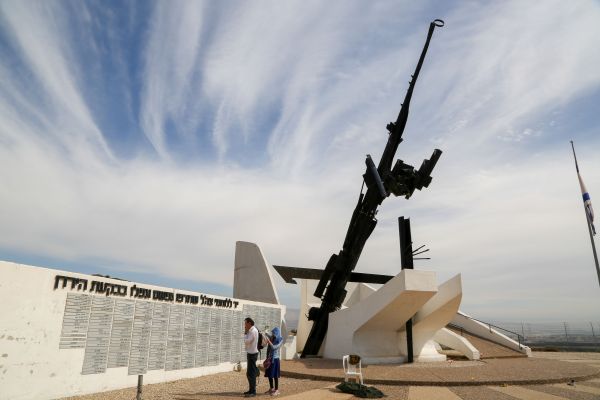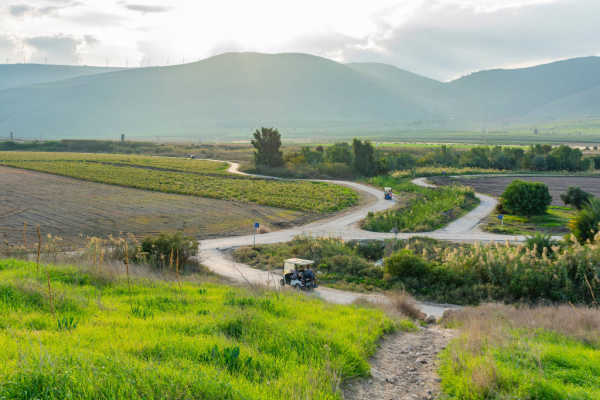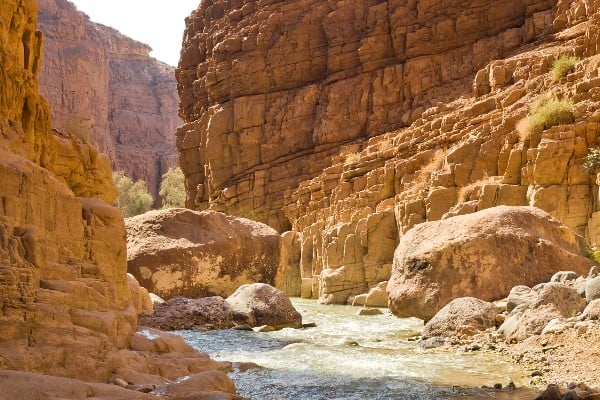Certain Biblical sites in Jordan are visible from Israel and can be experienced without leaving the Jewish state!
By Nosson Shulman, Licensed Tour Guide
“It was told to Laban on the third day that Jacob had fled. So, he took his kinsmen with him and pursued him…catching up with him on Mount Gilead.” (Genesis 31:22-23)
“He (Jacob)…crossed the ford of the Jabbok…Jacob was left alone, and a man (angel) wrestled with him until the break of dawn. When (the angel) perceived he could not beat (Jacob)… (the angel) said let me go… And (Jacob) said “I will not let you go unless you bless me” … (the Angel) said no longer will it be said that your name is Jacob, but Israel for you have striven with the divine…and overcome.” (Genesis 32: 23-29)
The modern country of Jordan has many biblical sites, where several of your favorite Biblical stories occurred. In fact, for much of ancient history the Israelites even ruled much of the country, specifically western Jordan, which today runs along Israel’s eastern border. This is great news for tourists to Israel, as most of these sites are visible from Israel and can be experienced without even leaving the Jewish state!
Today, we will leave Jerusalem and head north along highway 90, en route to Tiberias. On the way, we will stop at the IDF Jordan Valley war monument which is merely a few kilometers from the border. This area offers a panoramic view of a large section of Jordan, specifically the Biblical Gilead mountains and Jabbok River.
The war monument itself is dedicated to the 400 soldiers who died protecting the Jordan Valley area in the War of Attrition (1967-1970). The War of Attrition is perhaps Israel’s least famous but one of it’s most deadly wars.
After Israel miraculously won the Six-Day War of 1967 against the combined forces of Egypt, Jordan and Syria the Arabs realized that the Jewish state could not be defeated in conventional warfare. Instead, they tried a new tactic: sending individual fedayeen (Arab peasants in Jordan and Egypt) to infiltrate Israel and attack civilian and military targets.

In 1972, Israeli sculptor Yigal Turmarkin designed this Jordan Valley Monument. The names of all 400 soldiers who lost their lives are inscribed on it. This memorial was built with cement and steel. He took several guns, melted them, and shaped them into a 21-meter, anti-aircraft cannon facing the Jordanian border. (Yaakov Lederman/Flash90)
Under the instructions of Prime Minister Golda Meir, Israel developed a strategy of heavy retaliation. Any terror attack coming from Jordan would lead to heavy retaliation against its Jordanian military infrastructure and soldiers.
Arab losses mounted and after the death of President Gamal Abdel Nasser (the very antisemitic ruler of Egypt) in 1970, the Arab countries requested a ceasefire, which Israel accepted.
Unfortunately, 400 Israeli soldiers serving in the Jordan valley lost their lives during the War of Attrition. (Another 1,000 were killed during this time along the Egyptian front.)
From the vantage point of the memorial, one can easily see the Biblical Gilead Mountains in today’s Jordan.
This historic mountain range is mentioned many times in the bible.
Joseph was sold by his brothers to a caravan of Ishmaelites (Arabs) coming from Gilead (Genesis 37:25). The tribes of Reuben and Gad, who owned large herds of cattle, requested Gilead as an inheritance for their abundant cattle, and it will be given to them (Numbers 32).
In Deuteronomy 4, Ramoth in Gilead was designated as a city of refuge for inadvertent murderers. Elijah the Prophet was from Tishbi, a town in Gilead (1 Kings 17). Jepththat the Gileadite, judged Israel for six years and waged their wars from Gilead (see Judges 11 and 12).
One of the most interesting stories to take place in Gilead occurred when Jacob, living in modern day Iraq, fled from Laban with his wives (Laban’s daughters) and children, on route to Israel.
At Mount Gilead, Laban overtook Jacob’s camp and was about to kill him when G-d appeared and warned him not to harm Jacob in any way (Genesis 31). Laban returned to present day Iraq, while Jacob continued on to Israel until he reached the Jabbok river (the southern end of the Gilead mountain range).
Jacob first helped his family over the stream and then returned alone to the other side to retrieve his property. Whilst there, an angel attacked him. According to Jewish sources, this was the protective angel of Edom (the nation composed of Esau and his descendants), who Jacob was about to confront.
Ultimately Jacob prevailed, though a blow to his thigh caused him to limp for the rest of his life. This signified that many nations descending from Edom would try to harm the Jewish people throughout the coming generations, and in many cases would severely wound them. Ultimately Jacob’s descendants would never be fully annihilated, and ultimately prevail!
In addition to Mount Gilead and the Jabbok River, many other great sites in Jordan can be experienced from within Israel’s borders. In fact, one site is so significant, the Chumash (Five Books of Moses) finishes with it and the Book of Joshua begins with it.
To be continued…
Nosson Shulman is a journalist and Licensed Tour Guide in Israel specializing in Biblical tours. To allow tourists to experience Israel during the Corona era, he created the new hit Israel tour video series, which brings Israel to the home of viewers by simulating actual tours. To check out his free sneak preview tour videos, click here. To view sample tour itineraries or to inquire about private tour opportunities with a personalized itinerary on your next trip to Israel, click here.

